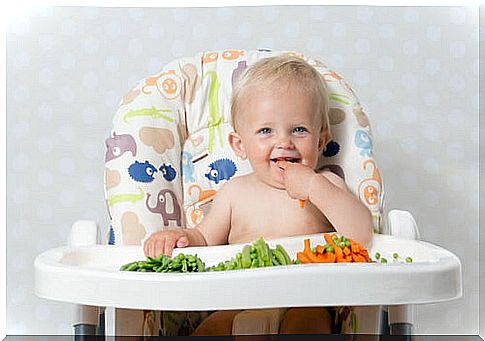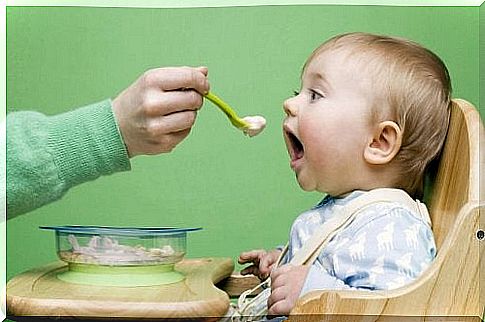5 Guidelines For Introducing New Foods Into Children’s Diets

The feeding and initial nutrition of babies is based on milk as the only food. But, as the child grows, we can start to introduce new foods that will contribute to the development of the little ones. Between 0 and 12 months of age, the child will grow rapidly, which implies a high demand for energy and nutrients. Therefore, the introduction of new foods in children’s diets must be carried out progressively.
In the phase of introducing new foods into the diet, you must be very patient, as you will need to carry out many tests and be aware of the baby’s signs. Remember, it’s critical to introduce new foods into your child’s diet one at a time. Thus, it will be possible to notice possible allergies and provide the child with the necessary time to get used to the taste of each food.
Discover some guidelines you can follow depending on your child’s age:
Guidelines for introducing new foods into children’s diets
From birth to 4 months:
From the moment the baby is born, he has the instinctive reflex to turn his head in search of the nipple when something touches his cheek. It is essential that during this phase no other food is digested except breast milk or formula. The baby’s digestive system will still be developing. That’s why you shouldn’t give solid food until the little one’s body is ready.
Foods you can give:
- Exclusively breast milk or formula.
From 4 to 6 months:
At this stage, you can start introducing cereal. You should start with cereals that do not contain gluten to avoid food intolerances. This food can be dissolved in milk or some baby food. And it is also possible to start giving fruits and vegetables. The ideal is to start with apples, pears, bananas, oranges, pumpkins, zucchinis, potatoes, among others.

It is important to introduce these foods into your child’s diet gradually and without adding salt or sugar. The following is a list of signs for knowing if your child is ready to start solid foods.
Signs for knowing if the child can eat solid foods:
- You can keep your head up on your own.
- You can sit in your chair to eat.
- It is capable of chewing.
- Shows a significant weight gain.
- Shows interest in food.
- It manages to bring the food to the mouth.
- You can move your tongue from side to side.
- You lose the reflex of taking food out of your mouth with your tongue.
Foods you can introduce:
- Vegetables in puree or baby food.
- Puree fruit.
- Semi-dissolved cereal fortified with iron.
From 6 to 8 months:
At this stage, babies will still be in the process of tasting fruits and vegetables. At this point, you can start with meat, which is a food with high nutrient content. Start with white meats such as chicken meat. Remember it must be a gradual process.
Foods you can add to your child’s diet:
- Puree meat.
- Ricotta or tofu.
- Natural yogurt in small portions.
- Vegetables in puree.
- Cereals fortified with iron.
From 8 to 10 months:
This phase is similar to the previous one. If everything is fine and the baby accepts all the foods, you can start introducing gluten-free cereals and fish. Like meat, fish is a food with a high nutrient content. You should start with white fish, for example hake.
Signs that your child is ready to eat food with his fingers:
- He picks things up with his thumb and forefinger.
- It can move things from one hand to the other.
- Put everything in your mouth.
New foods:
- Protein foods (beef, chicken, fish, tofu, beans, lentils, chickpeas, among others).

From 10 to 12 months:
Around one year of age, your baby will show some signs that will let you know if he is ready to try new solid foods. It is important that you present foods two or three days apart.
Signs that your child can already eat other solid foods:
- It seems to be easier to swallow the food.
- It has more teeth.
- He stopped taking food out of his mouth with his tongue.
- Try using a spoon.
Foods you can give:
- Fruits cut into squares or strips.
- Pieces of cooked vegetables.
It is very important to be properly informed about the baby’s feeding, so that he can experience each of these phases progressively. Also keep in mind that you shouldn’t overfeed your child. It will even indicate when you are satisfied because it is your stomach that determines the amount of food you need to eat.
If you have any questions about how to introduce new foods into the children’s diet, you can look for a pediatrician, who will guide you through the process.









